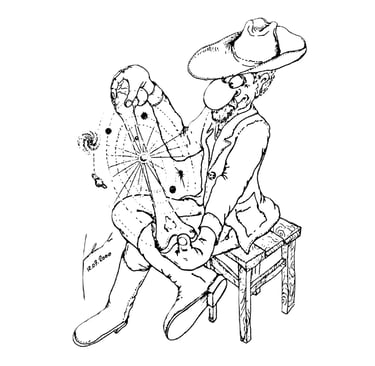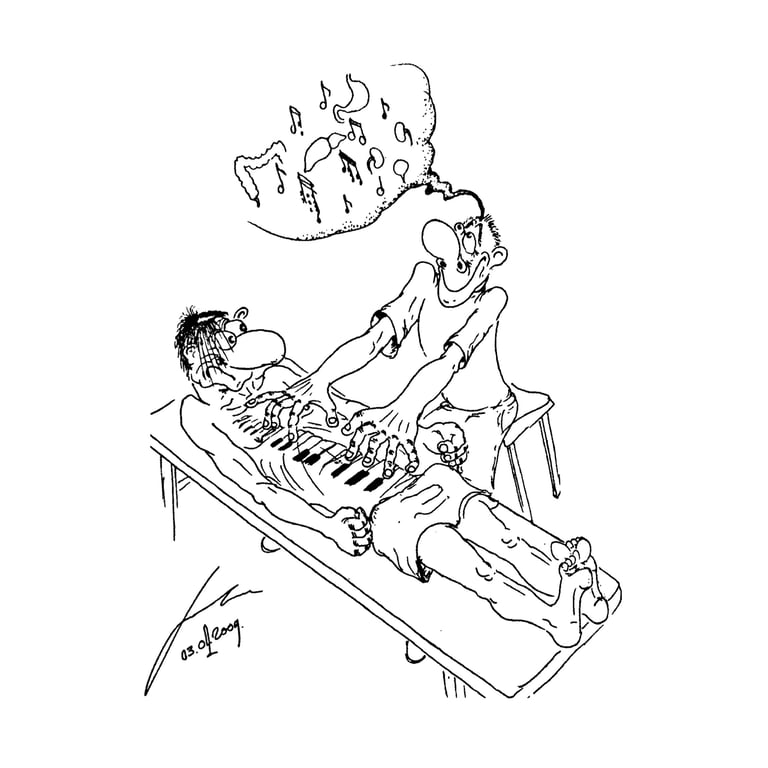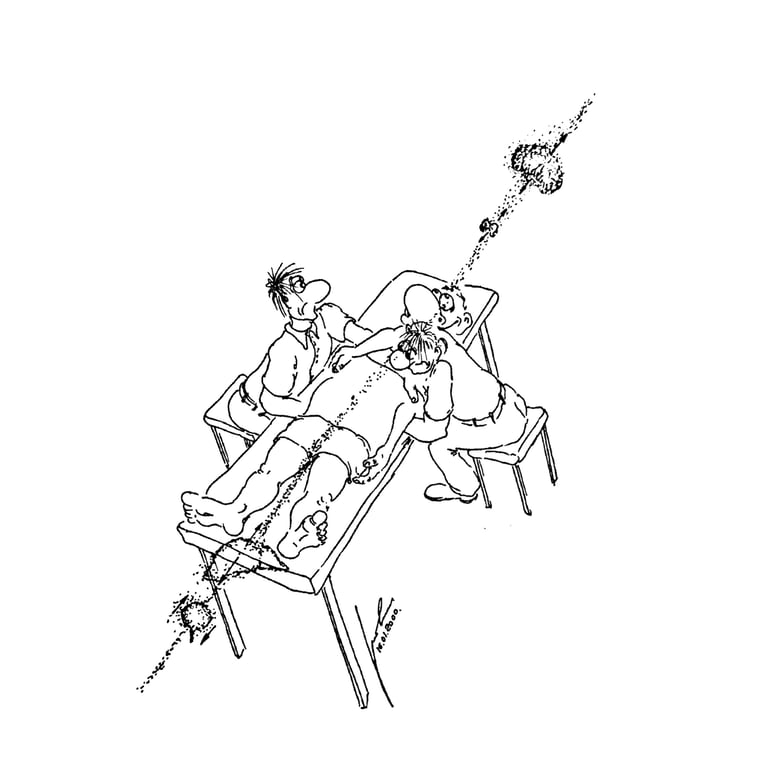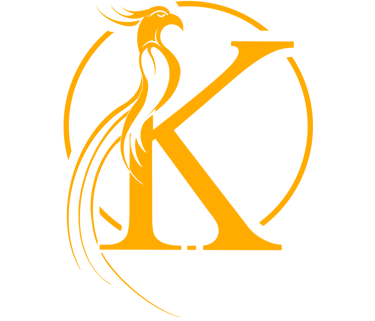
Osteopathy


It was developed in the mid-19th century by Dr. Andrew Taylor Still, a physician and surgeon from the USA.
He founded the first school, the 'American School of Osteopathy' (ASO), in 1892 in Kirksville, Missouri.
Later, clinics, birthing centers, and psychiatric institutes were opened in his name.
According to him, osteopathy is an art, science, and philosophy, with its cornerstone being a profound understanding of human anatomy.
What is Osteopathy?
Litvinov I.A. (2016). Osteopathische Skizzen. JOLANDOS Verlag, Pähl. S. 1-4


Osteopathy considers the interconnections of body, mind, and spirit in both illness and health.
In my practice, I focus on maintaining its structural and functional balance, as well as the body's innate tendency toward self-healing.

The art lies in the practitioner's ability to use only their hands to make corrections within the patient's body.
The science explains the understanding of how physical laws impact anatomical relationships.
The philosophy dictates a humble approach with deep respect for all systems of the body."


Litvinov I.A. (2016). Osteopathische Skizzen. JOLANDOS Verlag, Pähl. S. 11-124

There is no inherent reason for the body to be unwell.
When all systems are brought into harmony through treatment, the body is provided with optimal conditions to heal itself.
The goal of osteopathy is to alleviate pain, stimulate the body's self-healing processes, and prevent illnesses proactively.
Litvinov I.A. (2016). Osteopathische Skizzen. JOLANDOS Verlag, Pähl. S. 11-115



Areas of application
Pain syndromes
Joint blockages, including the spine
Jaw joint problems = TMJ dysfunction
(e.g., grinding teeth, after orthodontic treatments)
Headaches
(e.g., migraines, cluster headaches)
Digestive system complaints
(e.g., ulcerative colitis, Crohn's disease, irritable bowel syndrome, reflux)
Chronic fatigue and weakness
(e.g., chronic fatigue syndrome, long COVID)
Stress-related complaints
Post-fall and post-surgical recovery
Sports care
Psycho-emotional and psychosomatic tension states
Sleep disorders
It can be applied at any age.
In gynecology, additionally:
Complaints before and after childbirth
(e.g., pregnancy, postpartum)
Menstrual discomfort
Endometriosis
Breastfeeding difficulties
Children and infants:
digestion difficulties, jaw misalignment
Torticollis/scoliosis
Autism spectrum
ADHD and other concentration disorders

Osteopathic Techniques
Osteopathic diagnosis
Osteopathic indirect techniques
Balancing techniques
Combined techniques
Osteopathic direct techniques
Fluidbased techniques
Reflex-based techniques
Case history, standardized medical tests, palpation, and sensing.
Thrust (HVLA): A quick, controlled force that resolves joint blockages
(similar to chiropractic techniques).
Muscle Energy Techniques (MET): Contraction of a muscle against targeted resistance leads to the repositioning of a bone into its integral balance.
Manual Therapy (MT): Mobilization techniques of a proximal bone relative to a distal bone, improving joint play, increasing mobility, and enhancing metabolism.
General Osteopathic Treatment (GOT): Rhythmic movement of a body part increases metabolism and normalizes muscle tone.
Strain-Counterstrain: Positioning a body part in a relaxed position to regulate muscle tension and relieve pain.
Balance Ligamentous Tension: Positioning of a joint leads to the harmonization of ligament and capsule tension, as well as improved joint mobility.
Myofascial Release: Continuous pressure on the fascia releases tension and adhesions, improves mobility, and reduces pain.
Still Techniques: Compression or traction corrects joint blockages and muscular dysfunctions to reduce pain and improve mobility.
Craniosacral Techniques: Gentle maneuvers to regulate the flow of cerebrospinal fluid and improve bone motility, relaxing the nervous system and promoting physical as well as emotional regeneration.
Visceral Techniques: Mobilization and pressure on internal organs release tension, enhance mobility, circulation, and neural supply to the organs.
Chapman Reflexes: Pressure on specific zones of the body that are connected to internal organs and systems, used for the diagnosis and treatment of organ dysfunctions.
Trigger Points: Painful hardened points in the muscle, used to reduce pain, improve mobility, and regulate muscle tone.
Manuelle Lymphdrainage: Gentle techniques to reduce swelling caused by fluid retention.
Fluid Balancing: Gentle maneuvers to regulate the flow of cerebrospinal fluid, blood, and lymph.
World Health Organization. (2010). Benchmarks for training in osteopathy. WHO Press. https://www.who.int/publications

Praxis
Kontakt
office@osteopathie-kania.com
© 2024. All rights reserved.
Rechtliches
